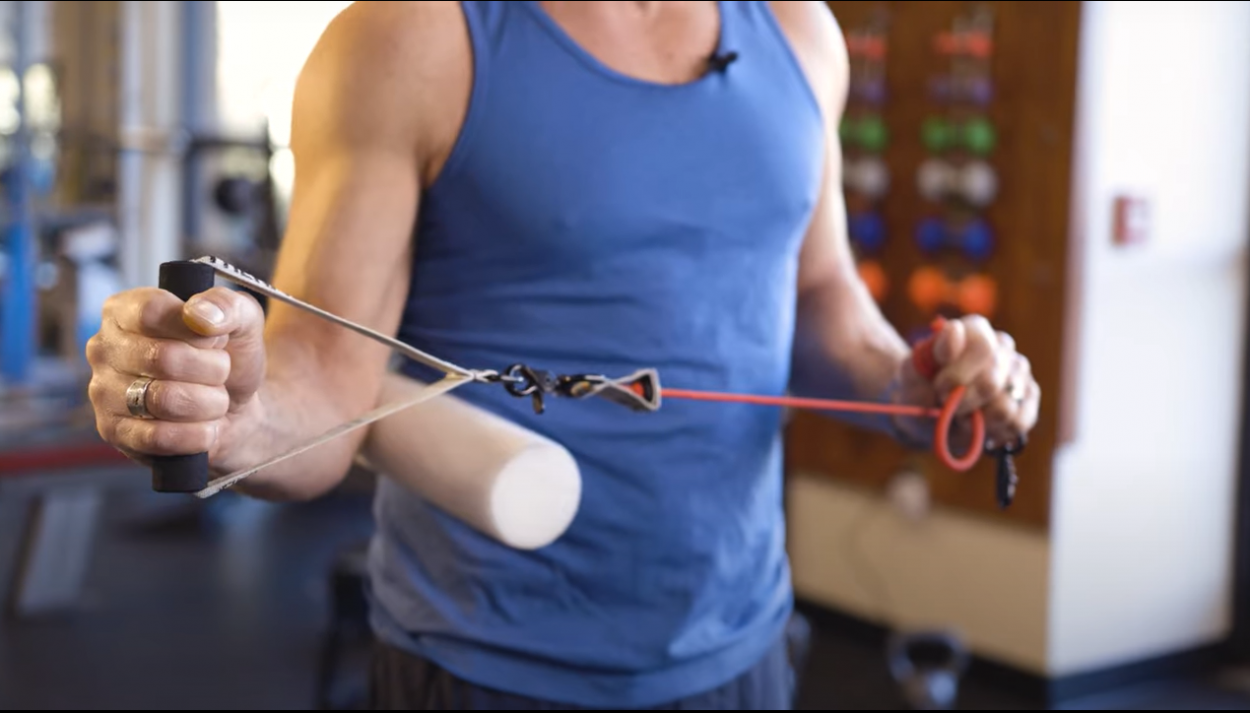
Orthopedic surgeon, and shoulder specialist, Dr. Scott Jacobson, reviews the best exercises and stretches to improve shoulder strength and avoid impingement syndrome.
The shoulder is a complex combination of anatomy involving several joints, tendons and muscles. The major components of the shoulder include the acromion, clavicle, shoulder muscles, scapula, rotator cuff tendons, humerus, biceps tendon, and bursa. These various parts rely heavily on one another to work together to complete simple daily tasks with ease and without pain.
A very common shoulder condition that is seen by shoulder specialists and orthopedic surgeons is called impingement syndrome. This condition can occur when the top of the shoulder blade places pressure on the underlying soft tissues by lifting the arm away from the body. As the arm is lifted, the acromion rubs, or “impinges” on, the rotator cuff tendons and bursa. This can lead to bursitis and tendinitis, causing pain and limiting movement.
“Repetitive use activities are a common way for this condition to occur,” says Dr. Scott Jacobson, orthopedic surgeon at The Center in Bend, Oregon. “An activity that an individual doesn’t do very often and then all of a sudden begins doing on a repetitive basis, such as shoveling snow, can start the process of this condition developing.”
To prevent impingement syndrome, there are some key exercises that orthopedic surgeons recommend doing on a consistent basis. These exercises target key muscle groups that will strengthen the muscles and major shoulder components, and will help avoid the onset of painful impingement symptoms.
“Strengthening the rotator cuff musculature is the primary focus of preventing impingement syndrome,” says Dr. Jacobson. “It’s important to make sure you are isolating the rotator cuff musculature and you are not inadvertently strengthening the deltoid.” Exercises that focus on strengthening the rotator cuff include external rotation and internal rotation. The best way to eliminate deltoid contraction during these exercises so that you’re only focusing on the rotator cuff is to cause what Dr. Jacobson calls “muscle confusion”. This can be done with a rolled up magazine or round piece of foam placed between the elbow and chest wall. These are great exercises to warm up with and at the same time strengthen your rotator cuff. Another element to consider when improving the health and function of the rotator cuff is to properly stretch. Stretching the front and back areas of the shoulder is just as important in preventing shoulder impingement as strengthening exercises.
In most cases of impingement syndrome, patients can find success with nonsurgical options. Rest, anti-inflammatory medicine, physical therapy, and steroid injections are all possible treatment options that can take several weeks to months to show gradual improvements. To avoid impingement all together, consistently perform the recommended exercises and stretches to support and strengthen the rotator cuff.





